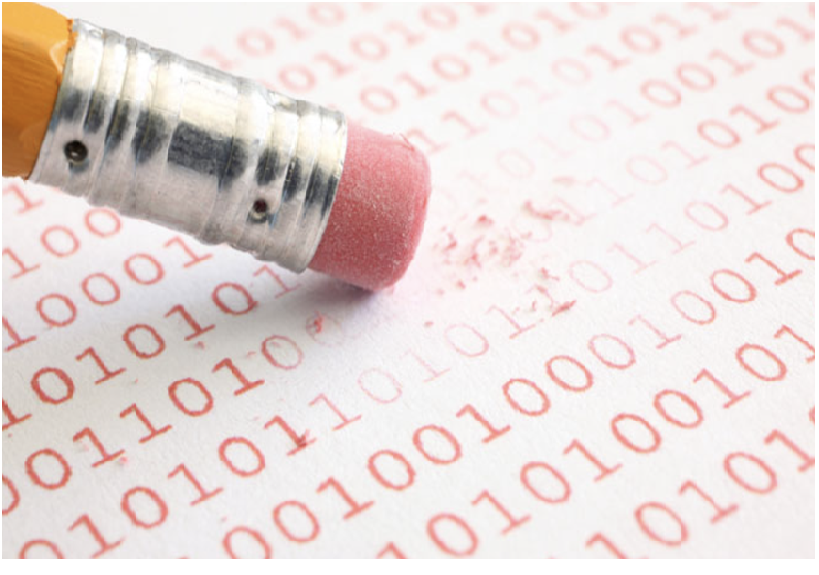Data destruction is intended to render the data on an electronic device unreadable. But what exactly is data destruction? How comprehensive is the process of data destruction?
This article will discuss the best data security methods that can be used to protect your data from prying eyes…
What is Data Destruction?
The data destruction process utilizes various data destruction methods (e.g. Data wiping, degaussing, and shredding are all methods used to erase data from all electronic devices, including smartphones, tablets, hard drives, tapes, and other portable devices. to ensure that the data does not fall into the wrong hands.
Why You Need Data Destruction
It is important to properly erase data because deleted files are not completely deleted. The only thing that is deleted from your device is the file reference. However, the actual file remains. Individuals who commit data theft are able to retrieve deleted files even though the operating system cannot locate them.
Why is it Important to Securely Destroy Data?
Electronic storage of data is a common feature, whether at home or in business. While electronic devices have made business operations more efficient and easier, there is a risk of data mismanagement and data breaches due to the sheer volume of digital data.
A company’s data could be lost, mishandled, or not properly handled. This can lead to incontinence and even catastrophic results. If an old hard drive isn’t accounted for, it could contain personal information about employees, financial records of the company, and other sensitive data that could be used in a data breach. Any sensitive data stored on an old storage device must be destroyed completely or made untraceable.
Sensitive Information That Must Be Dismantled:
- Software programs
- Institutional/business data
- Personally identifiable data
- Non-public data
An organization should make it a priority to avoid data breaches. A breach of classified data can have serious financial and legal consequences and cause consumers to lose confidence.
A data breach costs businesses on average $3.86 million. Even though these numbers are inflated by large corporations, even small businesses can suffer a serious financial loss from lost records. IBM estimates that the average cost of a lost record in 2018 was $148. Even modern hard drives are inexpensive and can store hundreds of thousands of records.
It is important to secure all outdated, at-risk storage assets and destroy their data in order to ensure security for an organization. There are many legal guidelines to be aware of when handling these assets.
Data destruction procedures must be compliant with federal and state data security and privacy laws. To avoid large fines, compliance with this legal framework is essential.
It is important to follow legal guidelines and calculate the best approach for your company’s data destruction requirements. This requires diligence. An authorized data sanitization company will be able to provide the required methods of destruction while adhering to all legal requirements.
How Does Secure Data Destruction Work?
Secure data destruction is more than just deleting data or emptying the trash. To completely destroy any device containing sensitive customer or company information, it is possible to follow internal guidelines, state regulations, and federal statutes like HIPAA.
A company can protect itself from potential data breaches and legal problems by destroying its data. A hard drive that was previously loaded with confidential information can be made inaccessible by one or more of these processes.
The appropriate method of data erasure will depend on the company’s size and the amount of information that is stored. Certain methods are better suited for high-security operations while others are better for bulk devices.
A company’s data destruction policy may also be affected by its corporate and organizational needs.
What Are the Different Types Of Data Destruction?
Data destruction used to be as simple as throwing paper in the fire or using a paper shredder. There are many options for electronic data storage, and each solution has its advantages and disadvantages. One of these methods is used to destroy data:
Data Wiping
Wiping data Wiping hard drives can be done by connecting them to a wiping device or using wiping software. While wiping preserves the core functionality of the device, it can take a lot of time and can lead to loss of data.
It can take several hours to complete a wipe. Time constraints might make it difficult for companies with many outdated hard drives. Even smaller operations might benefit from data wiping. They can provide self-service data wipes with the right guidance. If an operation is concerned about maintaining its storage media for financial and practical reasons, data wipes may be very beneficial.
Overwriting
Software-based data erasure method that erases all sectors on a hard drive or any other digital storage media.
Data Overwriting generally follows the 2014 NIST 80088 guidelines of erasure standard – “one overwrite pass with an exact pattern such as binary zeros” to permanently destroy data.
Overwriting is a popular method of data destruction. Overwriting, like wiping data, is time-consuming and takes multiple hours per device. This process is not possible if the hard drive has been corrupted or damaged.
Shredding/Crushing
Physical destruction of hard drives or other storage media, shredding or crushing parts to a small size. This guarantees that memory and function are irretrievable. According to NIST, the best and most bulletproof way to eliminate data is by destroying it.
Both of these methods require expensive capital, such as a shredder or skilled operator. However, they can be done on-site for added benefits. These methods are used when media wiping and degaussing are difficult or inaccessible.
When shredding/crushing is required for large amounts of storage media, it’s the best and most economical option. For large operations, many hard drive shredding companies offer favorable pricing based on scale.
Physical destruction is the best guarantee of inaccessibility. It is unlikely that any device can be repaired after the fact. However, it is possible to have peace of mind by seeing the remains.
These are the most common ways to destroy a hard drive or tape, or any other magnetic media.
- Hard drive shredding
- Grinding
- Melting
- Disintegration
- Incineration
- Pulverization
No one can retrieve information on a device using any of these methods.
This method has the main advantages over degaussing and certified data wiping
- This method offers the most secure among all data deletion methods.
- It is virtually impossible to recover any data that has been deleted.
- It is capable of destroying large amounts of media simultaneously.
- It can wipe out multiple media types at once.
- This is a great data wiping tool for large data centers.
Degaussing
The demagnetization of a storage device or tape hard drive neutralizes the device and erases the memory. Because of the strength of magnetism, media degaussing can cause irreparable damage to devices. Military personnel often use degaussing because it prevents the hard drive from ever being used again.
The process of degaussing electronic media is to reduce or eliminate the magnetic field and store information within storage media such as hard disks, cassettes/diskettes, diskettes, tapes, reels, and diskettes. The degausser uses a powerful magnetic field to demagnetize the media, which eliminates all data.
How does it work?
Coercivity is a magnetic property that every electronic device has. It refers to the number of magnetic fields required to increase the device’s magnetization to 0. The unit of coercivity (Oe) is measured in Oersteds. This refers to the amount of magnetic field required to get a device’s magnetization up to 0.
Degaussing has many advantages over traditional data erasure (also known as. Data wiping and overwriting are processes that include:
- Degaussing is safer than other methods. It destroys all data.
- A degaussing machine is fast and can erase data in less than 10 seconds
- It is versatile. Degaussing can remove information from any magnetic media.
- You can reuse the degaussed electronic device.
Although degaussing removes all data on hard drives, including startup files, it makes them unusable. However, most tapes can still be used, with the exception of those that contain boot-up files and a servo track.
This post was written by Steven Elia Co-Founder and Recycling Director at eCycle Florida. eCycle Florida is an R2 Certified electronics recycling company in the state of Florida. Our processes and procedures are dedicated to the proper destruction and recycling of your electronics. eCycle Florida is your go-to for commercial electronic recycling

